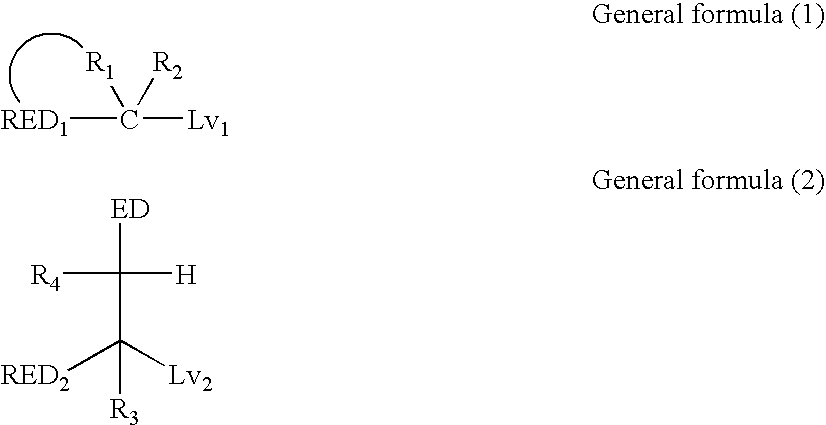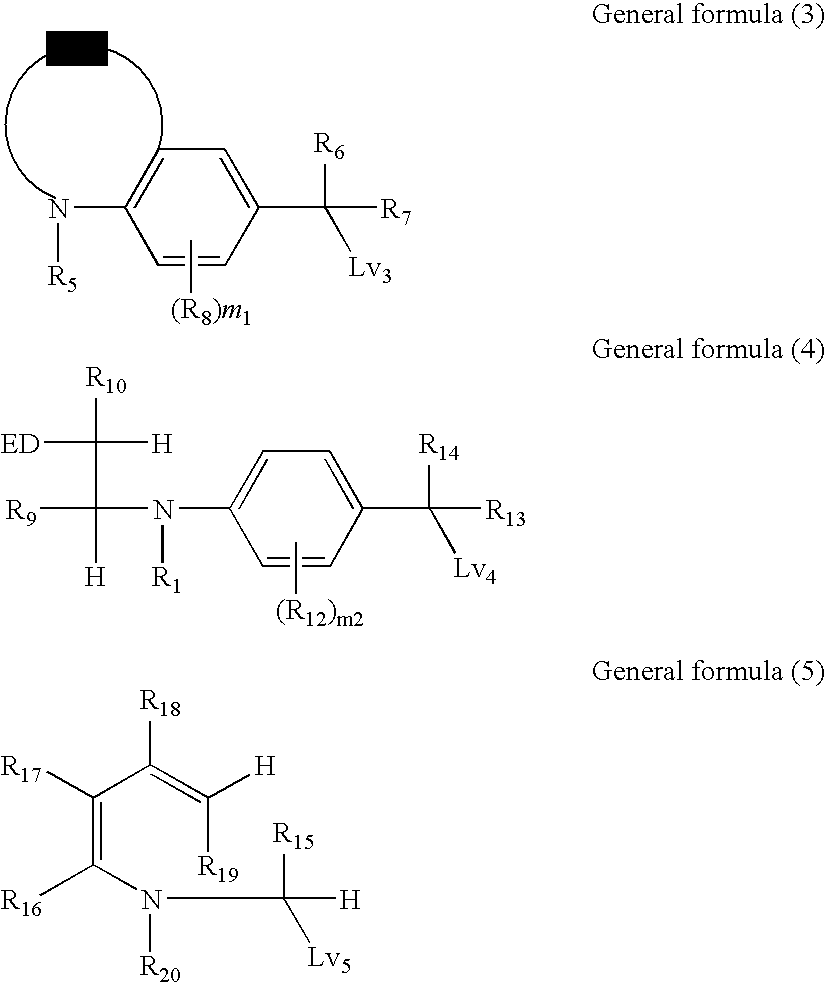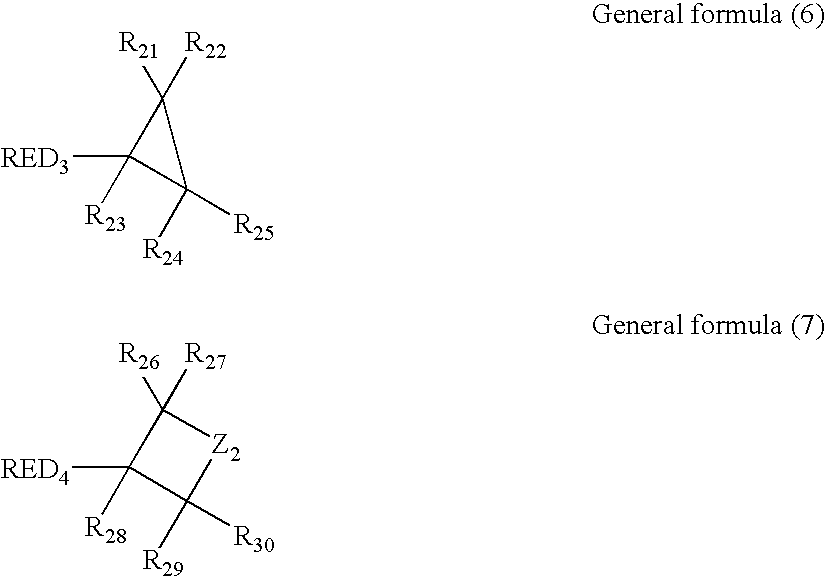Silver halide color photosensitive material
a color photosensitive material and silver halide technology, applied in the field of silver halide color photosensitive materials, can solve the problems of reducing the number of silver halide emulsion grains, reducing the number of development initiation points, and granularity, and improving the antistatic property, excellent high sensitivity and antistatic properties, and improving processing stability and radiation resistance.
- Summary
- Abstract
- Description
- Claims
- Application Information
AI Technical Summary
Benefits of technology
Problems solved by technology
Method used
Image
Examples
example 1
[0289] Each of layers having compositions as the under-description was coated in piles on a cellulose triacetate film support on which under-coating was carried out, to prepare a multilayer color photosensitive material (sample 101).
Coating of Light-Sensitive Layer
[0290] Each of layers having compositions as the under-description was coated in piles to prepare a color negative film sample 101.
(Compositions of Light-Sensitive Layers)
[0291] The number corresponding to each component indicates the coating amount in units of g / m2. The coating amount of a silver halide is indicated by the amount of silver.
[0292] (Sample 101)
1st layer (1st antihalation layer)Black colloidal silversilver0.108Silver iodobromide emulsion grainsilver0.011(average grain diameter 0.07 μm,silver iodide content 2 mol %)Gelatin0.900ExM-10.040ExC-10.002ExC-30.002Cpd-20.001F-80.001HBS-10.050HBS-20.0022nd layer (2nd antihalation layer)Black colloidal silversilver0.058Gelatin0.440ExY-10.040ExF-10.003F-80.001S...
example 2
(Preparation of Samples 201 and 202)
[0328] The silver coating amounts as shown in Table 7 were set by reducing the silver coating amounts of the emulsion layer for Sample 101 of Example 1.
(Preparation of Samples 203 to 206)
[0329] Samples 203 to 206 were prepared in such a manner that for Sample 101, compound 22 whose one-electron oxidation product capable of, through subsequent bond cleavage reaction or bond formation reaction, releasing one or more electrons were added at the addition amounts of 3.0×10−7 mol / molAg with respect to emulsions Em-A to Em-J and 3.0×10−6 mol / molAg with respect to emulsions Em-K to Em-N, and the silver coating amounts were changed as shown in Table 7 by reducing the silver coating amounts of the emulsion layer.
(Preparation of Samples 207 to 210)
[0330] Samples 207 to 210 were prepared in such a manner that for Sample 203, compound whose one-electron oxidation product capable of, through subsequent bond cleavage reaction or bond formation reaction, ...
example 3
[0334] Multi-layered color photosensitive materials were prepared in the same manner as in Samples 101 to 119 of Example 1 and Samples 201 to 210 of Example 2 except that polyethylene phthalate described in the Example 1 of JP-A-2002-144493 was used as the support. Similar experiment was carried out, and the effect of the present invention could be confirmed.
PUM
 Login to View More
Login to View More Abstract
Description
Claims
Application Information
 Login to View More
Login to View More - R&D
- Intellectual Property
- Life Sciences
- Materials
- Tech Scout
- Unparalleled Data Quality
- Higher Quality Content
- 60% Fewer Hallucinations
Browse by: Latest US Patents, China's latest patents, Technical Efficacy Thesaurus, Application Domain, Technology Topic, Popular Technical Reports.
© 2025 PatSnap. All rights reserved.Legal|Privacy policy|Modern Slavery Act Transparency Statement|Sitemap|About US| Contact US: help@patsnap.com



